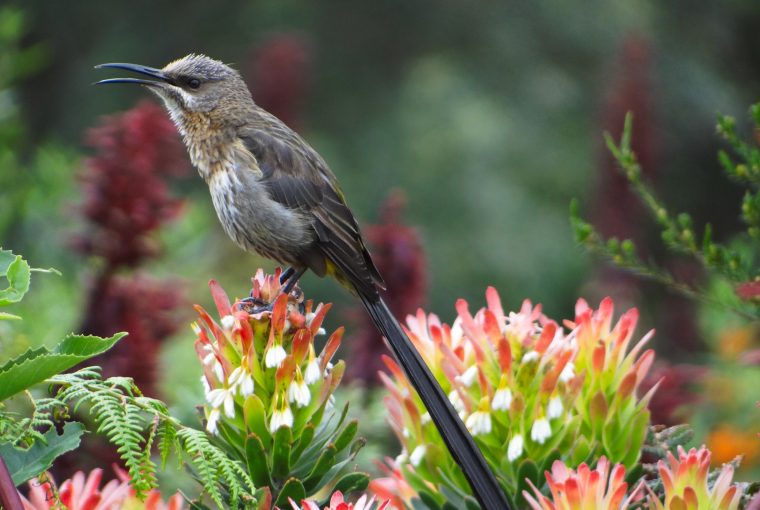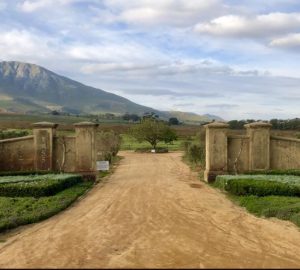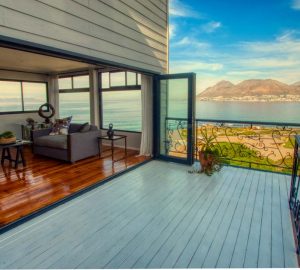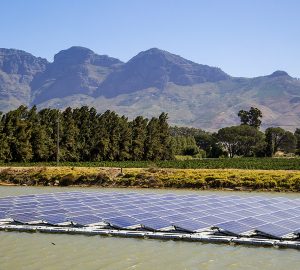DRY LAND, FLOURISHING GARDENS
The future of the planet starts at home
Wednesday 25th of April 2018
While the transport of water tanks on Cape Town roads has become a familiar sight, the sound of borehole drilling is equally common. And with up to 11 other major cities around the world, as recently reported by BBC News, likely to run out of water, the bigger picture is that the future prosperity of a drier planet will certainly start in our homes and gardens.
Never before has the issue of increasing our Natural Capital and managing the most valuable asset of most, the home, collaborated more powerfully – and this reality is being felt in unprecedented ways as a looming global water crisis has taken centre-stage.
In South Africa, Water Politics and Governance expert, Magalie Bourblanc, says in a recent article on Bizcommunity, that the Cape Town situation has laid bare the inadequacies of the entire country’s water management regimes.
“In fact, Cape Town’s misfortune is a wake-up call for the whole country. There are concerning signs of water crises everywhere, resulting in a predicted national crisis within the next 12 years,” states Bourblanc.
In a foreword to the ‘Guide to Biodiversity in Your Garden’ book released in 2016, Dr Andrew Golding, chief executive of the Pam Golding Property group, who are founding members of the National Biodiversity and Business Network (NBBN), says that a growing number of conscious consumers are reshaping the future economic worth of almost everything – and in particular the home.
According to Richard Smith, manager of the Pam Golding Properties Hyde Park branch, who also happens to be the vice-chairman of the Johannesburg Garden Club:
“A beautiful garden, especially one that stirs the imagination of today’s water-aware consumer, is the first visual impression of a property. And if it makes an impact, there is no doubt that it helps to sell a property.”
Further afield, trends in the UK boast that a well-maintained garden can add up to 20% to a property’s value, while American stats reveal an impressive 100%-1000% percent investment return on landscaping and a further 5%-20%, on the overall value of the home.
The Know chatted to Cape Town based botanist, pollination ecologist and revegetation specialist, Caitlin von Witt, whose life-work is dedicated to the rehabilitation of landscapes altered by urbanisation. von Witt, who works through her organisation Fynbos LIFE and its wholesale nursery, the Cape Flats Fynbos Nursery, provides the first in a short series of tips, on how to create and maintain a flourishing water-wise garden.
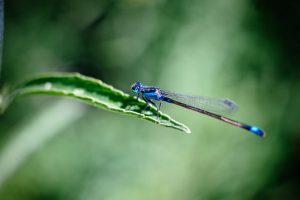
Create a rain garden through water harnessing
Our gardens are part of a greater system of finite water and the secret to water-wise gardening, is to slow the loss of water from our gardens back into the greater system. With an optimised water supply in place, plant selection and planting season are key, says von Witt.
- Install a rainwater tank. One 2500l tank can maintain a large (quarter acre!) locally indigenous garden throughout summer.
- Shape the land to capture rainfall. Prevent runoff with berms and swales, ponds and depressions. Build rockeries on berms to mimic rocky crags
- Emulate a wild seasonal wetland by planting densely in a shallow depression at the base of a downpipe.
- Prepare beds with a good layer of wood chip mulch to insulate soil, thereby locking in soil moisture and keeping roots cool.
- Minimise evaporation by softening harsh light from walls with creepers and vines, like the edible wild grape, Rhoicissus tomentosa.
Reuse and recycle
- Use biodegradable cleaning products and divert household grey water into filtration tanks and/or
- Create an attractive wetland that applies phytoremediation (living plants as purifying agents) to improve water quality, this water could then support a lush plant bed via seepage.
Create shade and shelter
- Using the drought-stricken Cape Town as an example, von Witt says that apart from the higher rainfall forest in parts of Newlands, Constantia, Bishopscourt and Hout Bay, large trees are not a natural occurrence on the water-scarce, windswept and fire-prone lowlands. She offers the following tips to create shade and shelter.
- Although only sheltered rocky slopes and gorges sustain taller trees in Cape Town, gardens can resemble remnants of fire-protected coastal thicket where small trees are common.
- These hardy, water-and wind-wise ‘shrubby’ trees like the Cape Camphor tree, Wild Olive and Dune Crowberry make useful windbreaks or hedges and nurse plants for fynbos beds.
- Most species in the Fynbos Biome (including Renosterveld and Strandveld) prefer full or partial sun and should be planted away from the deep shade of larger trees.
- Tall thirsty trees planted on the sandy Cape Town lowlands should have a good layer of compost and wood chip mulch. Drip irrigate less frequently for longer periods of time in the early morning and using grey water.
- Follow the example of ecological succession in nature by starting with pioneers and slowly introducing long-lived species over time.
- Remember to use the shade and shelter provided by your house to protect young saplings.
Don’t miss our follow up articles on how, what and when to plant, what to avoid, what to do about lawns, tips for regions and seasons and much more too. In the meantime, contact Caitlin von Witt via her facebook page or caitlin@fynboslife.com for more advice on how to create an unashamedly biodiverse garden that teems with life and beauty.
Posted by Niki Jackson


